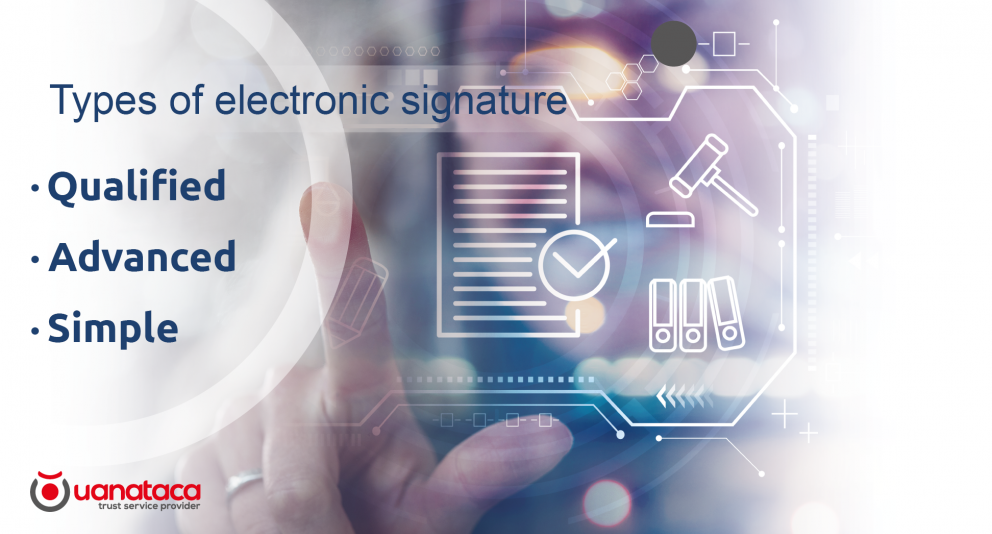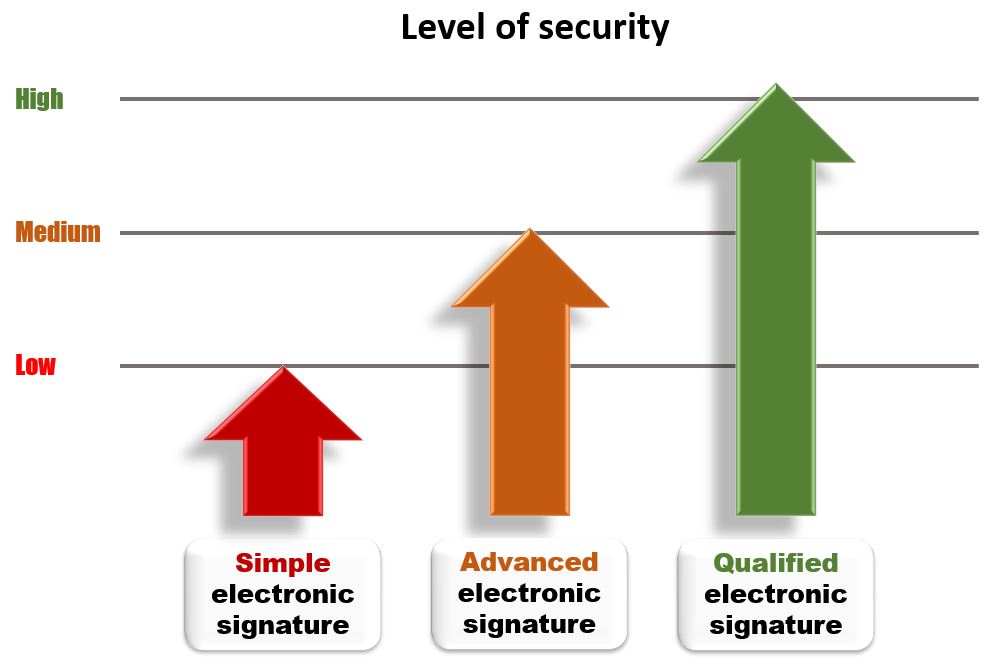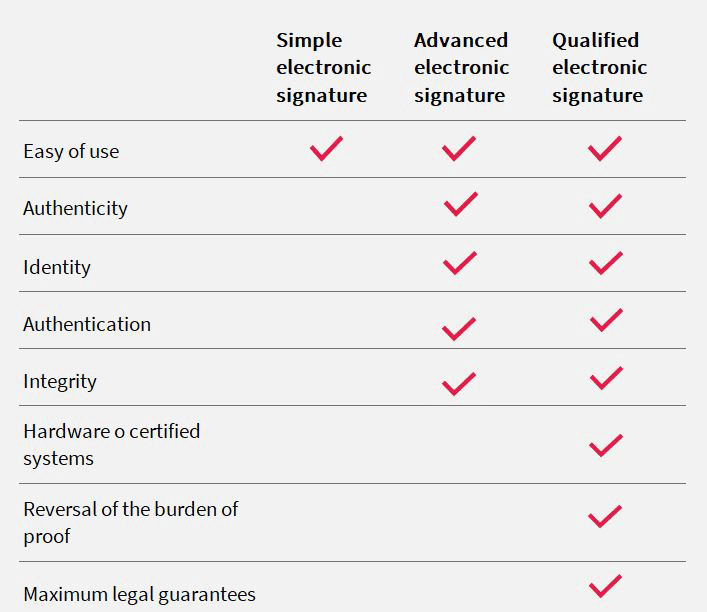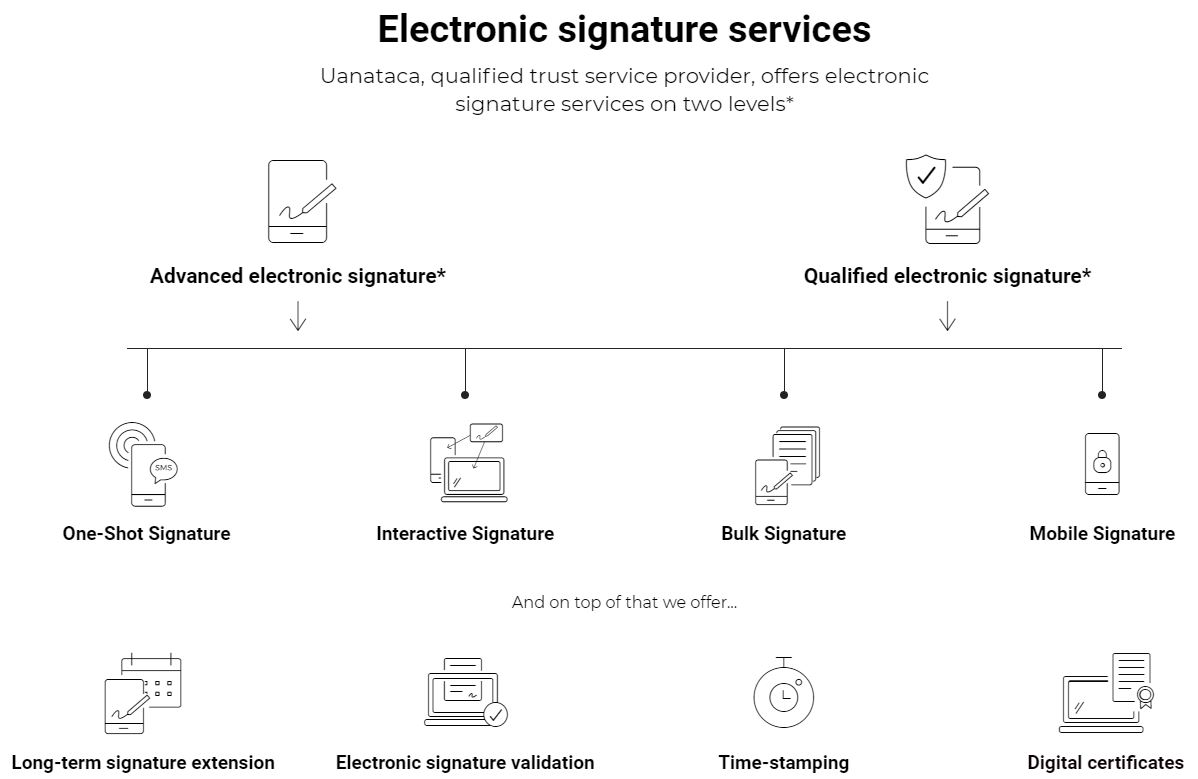
The drafting of this European Regulation No. 910/2014 is driven by the need to guarantee the security of electronic communications to establish a climate of trust, and the purpose of establishing the conditions in which the Member States recognize the means of identification of the natural and legal persons.
The new Regulation preserves the three types of electronic signature of the previous Directive. Each type of signature, despite sharing the objective of enabling acceptance of the content of an electronic message through a valid electronic medium, has a different level in terms of generating evidence and evidence, the authenticity of the signatory, the identity of the signatory, the integrity of the signed information and the authentication of the signature act.
Qualified, advanced or simple electronic signature
The electronic signature is the set of data in electronic form, recorded together with others or associated with them, which can be used as a means of identifying the signer. It encompasses from the most basic electronic signature and the one that provides the least security to the user, at the most secure and legally with the most endorsements offered by the qualified electronic signature.

➤ Simple electronic signature
The simple electronic signature proves the acceptance or approval of the signer by using some type of certificate, graphometric signature, code by SMS or simply by clicking on an "I accept" button.
The eIDAS Regulation defines it as "the data in electronic format attached to other electronic data or logically associated with them that the signatory uses to sign".
It is the most basic type of signature and cannot be compared with handwritten signatures. The lack of certainty regarding the content of the document and the impossibility of linking the signature with the signatory makes it the signature that lacks the maximum legal guarantees.
➤ Advanced electronic signature
The advanced electronic signature is based on a process that makes it possible to uniquely identify the owner, and detect any subsequent change in the signed data, guaranteeing the integrity of the signed content, through means over which only the signatory has exclusive control, and its ownership, which is certified by a third party.
The eIDAS regulation details the requirements that must be met:
a) Be linked to the signatory in a unique way
b) Allow the identification of the signer
c) Have been created using electronic signature creation data that the signatory can use, with a high level of confidence, under their sole control
d) Be linked to the data signed by it in such a way that any subsequent modification of the same is detectable
It is the type of signature you find at an intermediate level of security. Despite allowing the link with the signer, and guaranteeing certainty regarding the content of the document, it cannot be compared with handwritten signatures.
➤ Qualified electronic signature
The qualified or non-repudiation electronic signature provides the highest level of security and the maximum legal guarantees, avoiding situations of vulnerability. It is the only type of electronic signature that has a special legal status in the European Union.
This type of electronic signature, generated using a qualified signature creation device, is based on a recognized certificate. In this case, the electronic signature certificate has to be issued by a Trust Service Provider such as Uanataca, which, before issuing it, has reliably verified the identity of the certificate holder.
The eIDAS Regulation defines a qualified electronic signature as “an advanced electronic signature that is created using a qualified signature creation device and that is based on a qualified electronic signature certificate” Despite being the main objective of European Regulation No. 910/2014, to attribute to the electronic signature the same legal validity as the handwritten signature, only a qualified electronic signature can guarantee this equivalence.
How to choose the correct kind of electronic signature?
We must determine what level of security and certainty we want to implement in our company's processes. For this, we can assess the need to comply with the following requirements and discover the kind of signature that can offer them with maximum legal guarantees:
a) Authenticity: Being linked to the signer in a unique way
b) Identity: Allow the signer to be identified
c) Authentication: Create it using electronic signature creation data that the signatory can use under their sole control
d) Integrity: Be linked to the data signed, allowing to detect changes in the document after the electronic signature.
The following table will help you detect the type of signature you need and understand the differences between qualified, advanced or simple electronic signature

If after analysing the previous sections, it becomes necessary to comply with all requirements to implement the signature in all our processes and transactions, the Qualified Electronic Signature is the best option to carry out 100% secure and reliable electronic transactions.
What kind of electronic signature does Uanataca offer?
Uanataca designs solutions that facilitate digital transformation with maximum legal guarantees, easy to integrate and use.
As a Qualified Trust Service Provider, we only offer electronic signature services at the two levels that ensure that documents will have the utmost confidentiality, security guarantees and protection thanks to the integrated and audited services under the European Regulation eIDAS and the ISO27001 standard.

Validate electronic signature for free
When we receive a document electronically signed, it is essential to check the validity of the electronic signatures of the documents received, to verify their legal guarantees.
Validation is the way in which the parties involved in the process are certain of the integrity and authenticity of the document.
Do you need to validate the electronic signature of a document? You can do it for free in the Uanataca online signature validator . You can use it without cost and without limitations of use as many times as you need.
And if you have to validate the electronic signature of a large volume of documents or transactions, Uanataca's bulk verification of electronic signaturesallows you to optimize your time, in addition to offering you the maximum legal requirements, ensuring the confidentiality of information and facilitating integration.